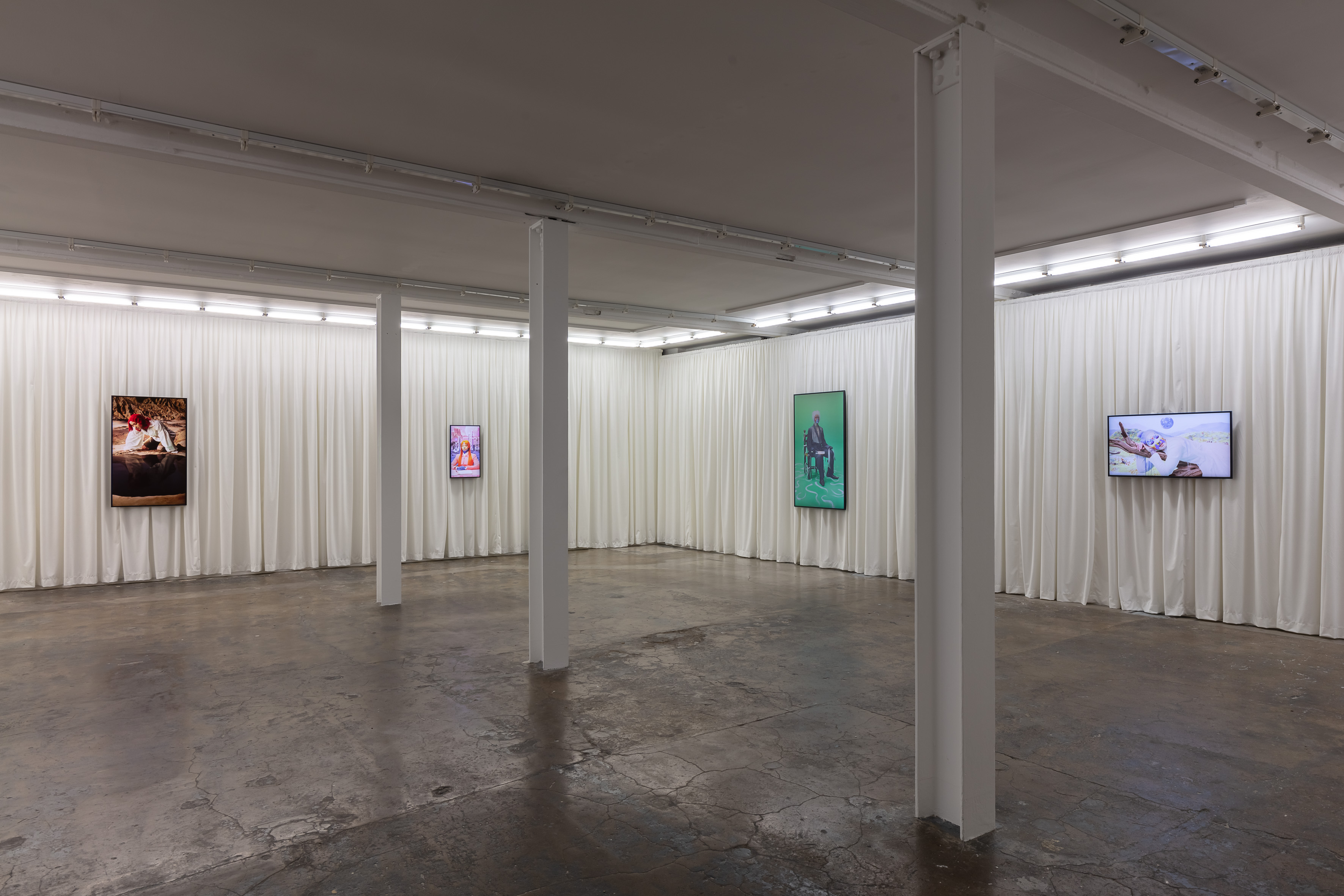In Portraits, Soft Opening presents five moving-image character portraits from Sin Wai Kin (b.1991 Toronto, Canada). Portraits continues the artist’s exploration of storytelling as a means to interrogate binaries and create fantasy narratives, which interrupt normative processes of desire, identification, and objectification. Drawing on personal experiences of existing beyond categories, Sin’s practice pivots around performance, moving image, writing and print to question idealised images, constructed identities and binary conceptions of consciousness.
Extending their ongoing project of using drag as a medium of embodied speculative fiction, Sin presents a multitude of characters who personify different themes and research. Found across various existing films and performances, these imagined figures reappear in different contexts, creating new constellations in the artist’s expanding universe with each work. Drawing on traditional roles in Cantonese and Peking Opera, Sin presents five characters in nearly life-size filmed portraits: “The Universe”, a warrior god embodying the binary of an individual and its context; “Change”, the embodiment of the constant of change; “Wai King”, an exploration of unbridled masculinity; “The Construct”, the embodiment of the binary of good and evil, and “The Storyteller,” Sin’s iconic personification of the role of storytelling in culture. Upon close reflection, these living portraits reveal the strain of holding one position — or existing as a single selfhood.
Theatricising the walls of the gallery, softly folded and flowing white velvet curtains run across all three walls of Portraits from floor to ceiling. Displayed in front of this, each of these new silent films loops continuously. The gesture of lifting screens onto the walls situates them within a lineage of painting, thereby historicising new narratives and identities via a continually expanding and developing cast of characters. The films themselves each reference a famous artwork from history, including Man Ray, Kiki with African Mask (1926); Caravaggio, Narcissus (1597–1599), Frida Kahlo, Self-Portrait with Cropped Hair (1940); Leonardo da Vinci, Mona Lisa (1503) and Lu Zhi, Chuang Tzu Dreaming Of A Butterfly (Ming Dynasty). Inserting their characters into an art historical lineage allows Sin to self-historicise their own practice while interrogating the positionality of the storyteller as a creator of histories. By blurring the boundaries of fantasy and reality in this way, the artist seeks to challenge the hegemonic narratives of history and asserts that image-making offers both the representation and creation of reality.
Enveloped in recognisable chroma green, the colour used in filmmaking that enables an actor to be lifted out of context and inserted elsewhere during post-production, the second space in the exhibition comes to represent a space of potentiality. A group of five faceless portrait busts gaze outwards, nobly displaying the wigs used during filming. At once everywhere and nowhere, the viewer becomes implicated within the artist’s acknowledgment of an individual’s relationship and reflection of their shifting context.

